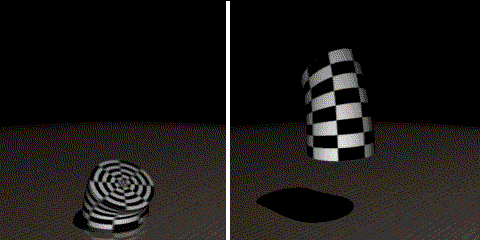 Squash and Stretch
Rigidity
Take for example a bouncing ball. A rubber ball bounces higher and squashs more
upon impact than a hard league ball. The ease with which an object squashs and stretches
defines the rigidity of the material making up an object.  Volume When a person smiles, the shape of the face is determined by the movement of muscles underneath a layer of skin. During a smile, though the head seems to increase in size, with the widening of the mouth and jaw, it does not. The object is simply displacing its matter into the stretched shape. The most important rule to squash and stretch is that no matter how squashed or stretched out an object gets, its volume remains constant.[2]
 Guidelines The squashed position depicts the form either flattened out by an external pressure or constricted by its own power. The stretched position always shows the same form in a very extended condition.[2]
 [ t i m i n g ] |